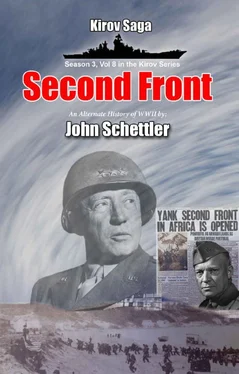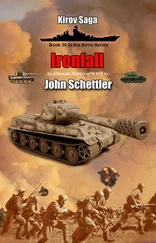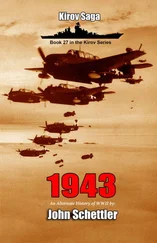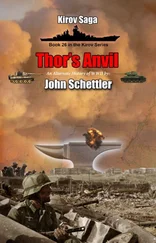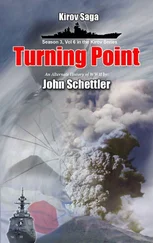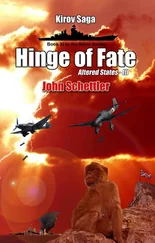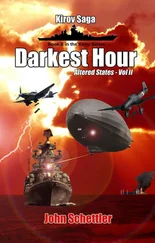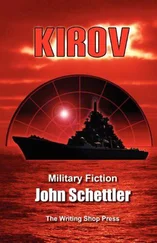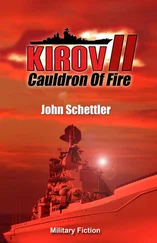The planes they were after were well beyond his visual range, but seeing those missiles was enough. “Watchman! Report this sighting to the radio officer. Tell him to transmit it to Takami .”
Kurita shook his head, a disdainful look on his face. Radars were useless. This cruiser was supposed to be scouting for the presence of the enemy here, but instead it was lagging well behind. How could it see anything there? I am told it has better radars than we have, but surely they could see nothing. Now we have the irony that my watchmen are the first to see and report contact with the enemy—out there, somewhere. Let us see if we can find him today. I will be the first to see and fight this Mizuchi .
That was an honor he might want to shirk from if he could have taken the real measure of his enemy. But even so, it would not have stopped him from pressing on to attack. He had good ships here, fast, well armored, the best in the fleet. Rockets or no rockets, he was going to attack.
Some minutes passed, and then the watchmen called out yet another sighting, this time a bright fire high up in the sky, descending rapidly like a falling plane might, but much faster. It plummeted towards the sea, commanding the attention of Mark 1 Eyeball systems throughout the task force, and then, to their great amazement, it suddenly pulled out of that dive, leveled off, and came streaking in towards Haruna . Kurita watched, spellbound, seeing a naval rocket now aimed for his ship for the very first time.
The words of Admiral Yamamoto whispered at his ear: “…they are fast, lethal, and have a very long range. They can strike your ships from well beyond the range of your battleships’ biggest guns, and well over the horizon—and from what we have seen, these rockets have deadly accuracy—they never miss their targets.”
The alarm was sounding, a harsh claxon of warning. Men were rushing to their battle stations, soon manning their twin 25mm AA guns. Even if the men could ready those guns, swivel them toward the threat, sight and fire, the rounds would be traveling at 1126 feet per second, about the speed of sound. The Sunburns were moving at twice that speed on their low terminal approach, and the gunners wouldn’t get a single round anywhere near that missile before it thundered home.
The explosion rocked the ship, and though the side armor held, the fragmentation, shock and fire, were going to take out the secondary 127mm gun battery nearest to that hit, about 150 feet aft of the main conning tower and bridge. Kurita felt the sibilant rush of hot shrapnel rush past his ear, and he had come within half a foot of being killed at that moment. Haruna rocked, then righted herself, the ship now wreathed in heavy smoke. A hot fire was burning.
Now images of all he had seen aboard Mutsu returned to haunt him…. “You will see them easily enough,” the officer there had said to him . “They claw the sky like Raiju, more terrible than the sky demon Itsumade. Yes, you will see them when they come, but there will be nothing you can do to stop them. Look how the fires consumed our ship!”
“Did you fire back at them?”
The man smiled. “There was nothing to shoot at. We never saw the enemy ship—only these terrible rockets.”
“Then they are cowards if they refuse to face you in battle.”
“That may be,” the officer had told him, “but here sits Mutsu, a burned wreck, and the enemy still commands the northern sea.”
“We shall see about that.”
Kurita remembered how he put on an outward face of bravado, but now the smell of the charred metal on old Mutsu that had haunted him after that visit was the smell of the burning flesh of his own ship—a horrid, gasoline smell, as if an entire bunker of aviation fuel was burning, burning….
“Thatwas just a warning shot,” said Karpov. “Strong advice that if they persist on this course they will get more of the same.”
The four S-300s Samsonov had fired each caught a Shotai of enemy fighters, shattering those three plane formations and taking down seven of the 15 planes. Three more persisted, and he allowed them to come within range of the Kinzhal/Klinok system, putting a missile on each one to end the threat. The other five were wandering aimlessly off bearing, and it was deemed that they would pose no real threat. They eventually made it back to their base, with a tall tale to tell of fast moving dragons that devoured planes.
As for the nine Betty Bombers, two S-300s were used to break up that formation, downing three with their heavy fragmentation burst, and damaging three others. They had not heeded the advice to fly a dispersed approach pattern, their training to maintain a close formation becoming their undoing. The expenditure of six S-300s and three medium range Klinoks had therefore parried the dangling jab, and Takami was not yet ready to attempt a missile strike. Still unaware of the true nature of the enemy they were facing, Karpov then had Samsonov deliver a sharp punch to Haruna , a warning shot as he called it, with fire and steel.
“That won’t stop them,” said Fedorov.
“Perhaps not, but it will certainly get their attention. I will not tolerate any interference from the Japanese Navy.” Karpov raised a finger as he spoke.
“Then you may have to deliver a much harder punch.”
“Easily done. At the moment, however, those ships do not appear to have the speed to close the range if I come about. Unfortunately, I have no desire to come about until this matter is concluded. We will hold this course, and deal with them if they persist. That’s the only way to assure they pose no threat to my transports further north. And just in case they have more land based aircraft forming up, I want the second KA-40 airborne and heading west towards Sakhalin immediately.”
“Aye sir, I’ll send down the order.”
Sea of Okhotsk, 20 May ~ 13:15
“Kurita just took a hard blow,” said Otani. “Missile impact on lead formation ship.”
“We might have stopped that missile,” said Fukada.
“Yes,” said Harada, “but the next one would be headed our way, and we aren’t in position to fire.”
That was the real problem Harada faced. The U.S. Navy in the early 21st century was built like a very intricate puzzle. Each ship was a piece of that puzzle, and to see the real picture of the power it could project, one had to look at the task forces and battle groups that made up that segment. No single ship had ever been designed to operate alone, except perhaps the stealthy submarines carrying ICBMs. A typical US battlegroup would be centered on a single aircraft carrier, which was then accompanied by one or two AEGIS cruisers and three to five destroyers, with one or more attack subs patrolling as well.
DDG-180 was just one small piece of that puzzle, a ship that had been designed to operate with other vessels, and one that sang in the chorus of their combined voices at sea. Takami should have been at sea with at least one more AEGIS capable destroyer, several DE class destroyer escorts, and one of Japan’s DDH class helicopter destroyers, quietly being adapted to perform a strike role with the addition of the F-35 Lightning. The ship was never designed to make a solo performance.
In the modern American Navy, the carrier aircraft trumped the longer range of Russia’s excellent SSMs, able to strike with a wide array of air delivered weapons from its planes. The best way to defeat those powerful Russian missiles was to see that they were never even launched by first destroying the ship that carried them. Here, in 1942, the air arm of Japan’s offensive capability was orders of magnitude weaker. Kirov had just casually brushed aside the first wave of land based planes, and it would take considerably more aircraft to pose any real threat.
Читать дальше
